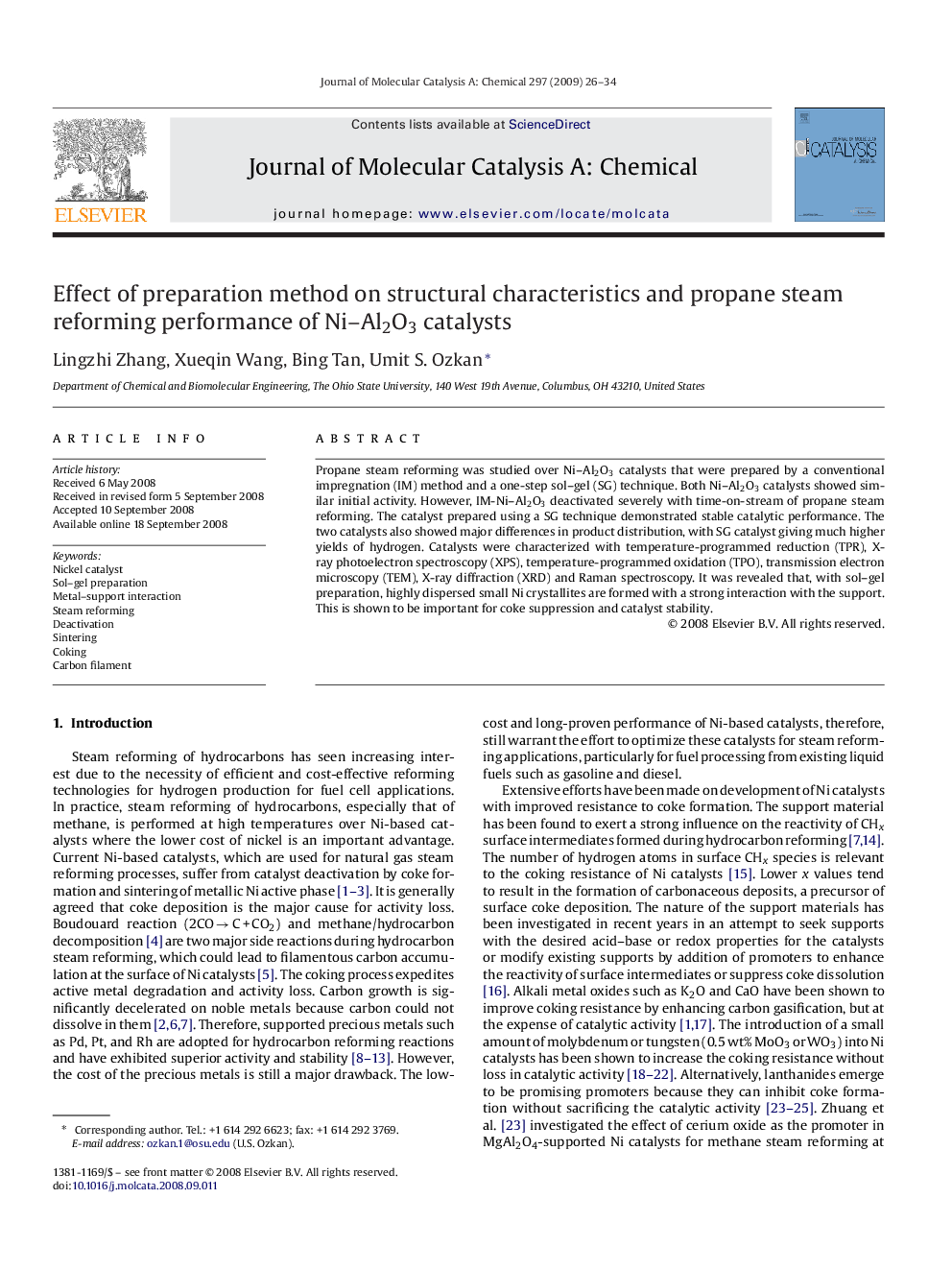| Article ID | Journal | Published Year | Pages | File Type |
|---|---|---|---|---|
| 67177 | Journal of Molecular Catalysis A: Chemical | 2009 | 9 Pages |
Propane steam reforming was studied over Ni–Al2O3 catalysts that were prepared by a conventional impregnation (IM) method and a one-step sol–gel (SG) technique. Both Ni–Al2O3 catalysts showed similar initial activity. However, IM-Ni–Al2O3 deactivated severely with time-on-stream of propane steam reforming. The catalyst prepared using a SG technique demonstrated stable catalytic performance. The two catalysts also showed major differences in product distribution, with SG catalyst giving much higher yields of hydrogen. Catalysts were characterized with temperature-programmed reduction (TPR), X-ray photoelectron spectroscopy (XPS), temperature-programmed oxidation (TPO), transmission electron microscopy (TEM), X-ray diffraction (XRD) and Raman spectroscopy. It was revealed that, with sol–gel preparation, highly dispersed small Ni crystallites are formed with a strong interaction with the support. This is shown to be important for coke suppression and catalyst stability.
Graphical abstractPreparation method is seen to play a major role in the activity and long-term stability of Ni–Al2O3 catalysts in steam reforming reaction. The primary mode of deactivation is the coke formation on the surface, which appears to go through different mechanisms for catalysts prepared by impregnation versus a sol–gel technique.Figure optionsDownload full-size imageDownload as PowerPoint slide
